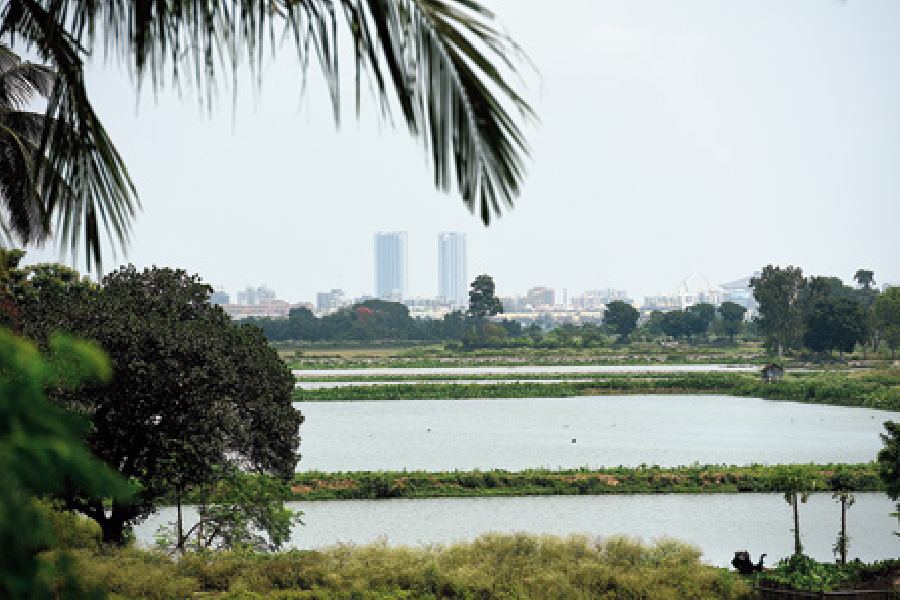The state environment department has put up boards along EM Bypass and roads leading to the East Calcutta Wetlands informing people that the wetlands are of international importance and need to be conserved.
The board says: “East Kolkata Wetlands is a wetland of International Importance. It is our pride. We must conserve it”.
Some of the boards have the message written in Bengali.
A map accompanies the message. The map shows the 37 mouzas that make up the wetlands.
Encroachments, illegal constructions and even buying and selling of land are threats to the wetlands, said officials in the state environment department. All such activities are banned in the East Calcutta Wetlands.
The boards and the accompanying maps, the officials said, are being put up to alert people so they do not take part in any illegal activity inside the wetlands.
People who have been found to have purchased land inside the protected area have told officials from the environment department, when they were questioned, that they did so unaware of the fact that it was a protected area. Brokers often dupe people into buying land, said an official.
On Friday, Metro found several such boards at short intervals between Chingrighata and Kalikapur on the EM Bypass.
The 12,500-hectare East Calcutta Wetlands were included in the Ramsar list of “Wetlands of International Importance” on August 19, 2002. The Ramsar Convention is an international treaty for the conservation of Ramsar sites. India is a signatory to the treaty.
The wetlands have been classified into three parts — settlements, where human habitations are allowed; agricultural land; and water body.
The website of the East Calcutta Wetlands Management Authority, which functions under the state environment department, mentions that the wetlands are “under threat from various directions”.
An official of the environment department told this newspaper that there are over 500 pending FIRs filed by the department for encroachments on land and water bodies at the protected site.
“Putting up the boards is part of our awareness campaign to let people know the importance of the wetlands. We have also mentioned the name of the mouzas that make up the East Calcutta Wetlands,” said an official of the Wetlands Management Authority.
An official said they hoped that before buying land, people would verify whether it is in any of the mouzas that form the wetlands. The whole of 30 mouzas and parts of seven mouzas constitute the wetlands.
Environmentalists said the wetlands serve as a natural sewage treatment plant for Calcutta, saving the city from spending crores of rupees in building such plants. The treated sewage water is used in fisheries and for agriculture.
“The East Calcutta Wetlands (Conservation and Management) Act, 2006 prohibits changing the character of land or changing the mode of use,” said an official. “People who have been living and farming inside the wetlands can continue doing so. But none can convert any portion of a wetland into an agricultural land or build a permanent structure on any piece of land.”
The environment department has asked the Calcutta Municipal Corporation to put up 72 boards with the message and the map along EM Bypass and neighbourhoods off the Bypass, which serve as gateways to the East Calcutta Wetlands.
“The state public works department will put up more such boards,” said an official.
A part of the wetlands is under the Calcutta Municipal Corporation and the rest is under the Bidhannagar Municipal Corporation.
An official said the problems of encroachment, illegal construction and filling of water bodies are more prominent in areas close to the city. Some of mouzas under threat are Pashchim Chowbhaga, Jagatipota, Aatghara, Mukundapur and Nonadanga.
